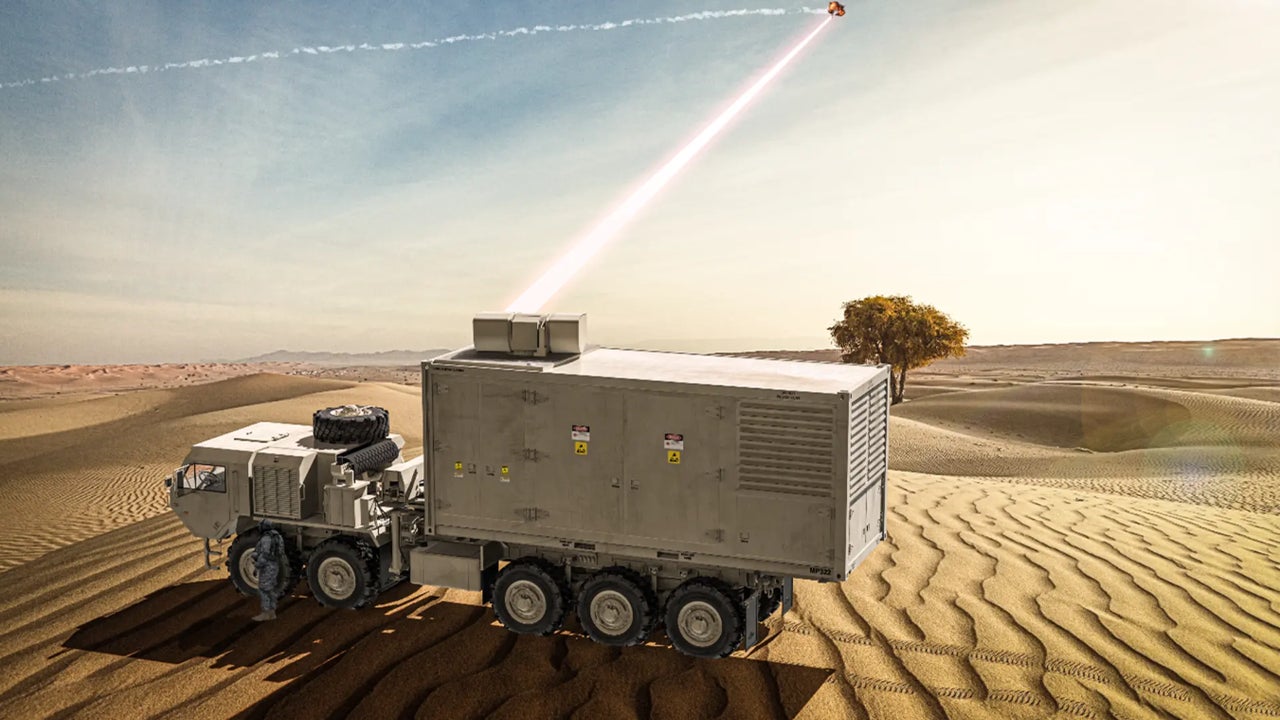More and more armies on the planet are using and developing high-energy laser weapons for missions on land, sea, in the air and even in space. Without a doubt the sight of swarms of small, inexpensive drones filling the skies or gliding over the waves is a good reason to use this type of defensive weapons, especially due to their cost-benefit ratio. But how do they work? What are your advantages and disadvantages?
Basically, a laser uses electricity to generate photons or light particles. Photons pass through a medium or material which creates a cascade of additional photons, rapidly increasing the number of photons. The next step is focus all these photons into a narrow beam of light which condenses them and gives them more power.
Since the first laser was introduced in 1960, engineers have developed a variety of lasers that generate photons at different wavelengths in the electromagnetic spectrum, from infrared to ultraviolet. In this sense, high energy laser systems that are being developed with military objectives, They are based on solid-state lasers that use special crystals to convert electrical energy into photons. A key aspect of high-power solid-state lasers is that photons are created in the infrared portion of the electromagnetic spectrum and therefore cannot be seen by the human eye.
Low-power lasers that generate photons in the visible part of the spectrum are useful as light sources for pointers and light shows at public events. These rays are so low in power that they simply reflect off a surface without damaging it. The higher power ones, on the other hand, are used to cut biological tissue in medical procedures. Finally, there are the higher power lasers, capable of heating, vaporizing, melting and burning many materials different and are used in industrial processes for welding and cutting.
A key advantage of high-energy laser weapons is that they provide an “infinite magazine” – explains Ian Boyd, director of the Center for National Security Initiatives in an article -. Unlike traditional weapons, which have a finite amount of ammunition, a high energy laser can continue firing as long as it has electrical power”.
There are those that can be mounted on a battle tank, those that are deployed aboard a ship to defend against small, fast-moving vessels on the ocean surface, as well as missiles and drones. And finally those who will go on airplanes and even satellites, like those that Russia would be developing.
“A key challenge for the military using high-energy lasers is the high power levels needed to create useful effects from afar,” adds Boyd. Unlike an industrial laser that may be just a few centimeters away from its target, military operations involve significantly greater distances. To defend against an incoming threat, such as a mortar shell or small boat, laser weapons must engage their targets before they can inflict damage.”
And this is when the problem arises. Tens to hundreds of kilowatts of power are needed to cause damage to a target at safe distances. The smallest laser weapon prototype, for example, consumes 10 kilowatts of power, approximately the equivalent of an electric car. At the other extreme is the most powerful high-energy laser weapon being developed: it consumes 300 kilowatts of power, enough to power 30 homes. And because high-energy lasers are at best only 50% efficient, they generate a huge amount of waste heat that must be managed. One way to solve this would be to harness waste heat to generate more energy. It wouldn't be much, but it would be enough to extend the “useful life” of the weapon a little more.
“Another important limitation for high-energy laser weapons – concludes Boyd – relates to the infinite magazine concept. Since the truck, ship or plane must carry the power source for the laser, that will limit the capacity of the power sourcelasers can only be used for a limited period of time before they need to recharge their batteries.”

